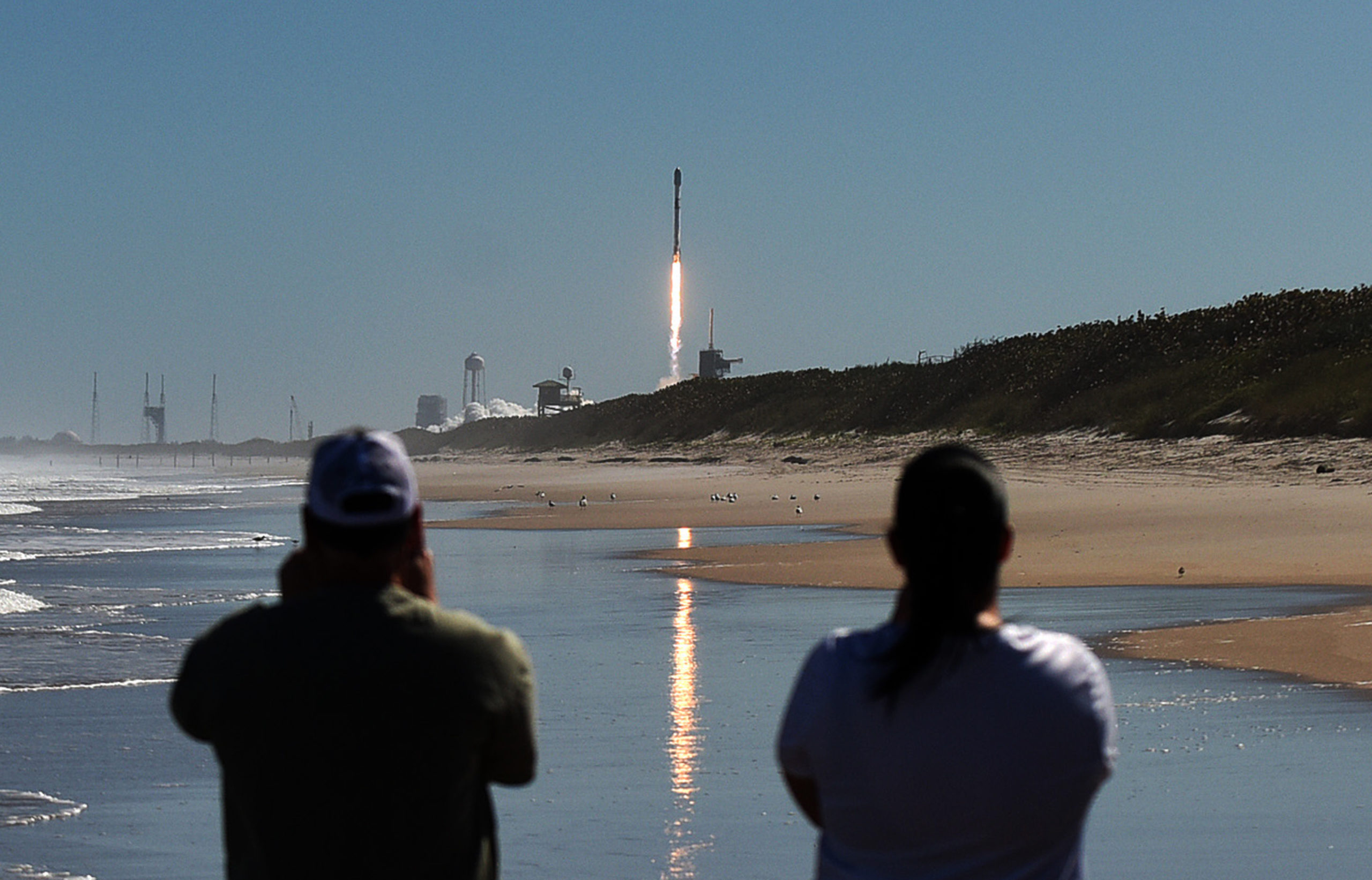SpaceX is about to eliminate up to 40 Starlink satellites from its newest launch because of to a robust geomagnetic storm that disrupted the satellites’ trajectory.
A SpaceX Falcon 9 rocket launched a batch of 49 Starlink satellites previous Thursday (February 3) from the Kennedy Place Centre in Florida. A day later, a geomagnetic storm elevated the density of Earth’s higher atmosphere, avoiding the satellites from reaching their supposed orbit.
Subscribe to Observer’s Business enterprise E-newsletter
“Unfortunately, the satellites deployed on Thursday were substantially impacted by a geomagnetic storm on Friday,†SpaceX reported in a mission update on Tuesday. “These storms result in the environment to warm and atmospheric density at our lower deployment altitudes to enhance.â€
While the satellites ended up commanded into a protected mode the place they would fly “edge-on (like a sheet of paper)†and “take cover from the storm,†they eventually failed to have out the maneuvers required to access the essential altitude.
“Preliminary investigation present the improved drag at the low altitudes prevented the satellites from leaving risk-free mode to get started orbit-boosting maneuvers,†SpaceX mentioned, including that up to 40 satellites will de-orbit back to Earth. Starlink satellites are created to disintegrate on re-moving into Earth’s atmosphere, so there will be no room debris or hazard of collision with other spacecraft, the corporation reported.
A geomagnetic storm is a short term disturbance of Earth’s magnetosphere that occurs when there is a “very economical exchange of power from the solar wind into the space natural environment encompassing Earth,†according to the Space Weather Prediction Heart, operated by the U.S. National Oceanic and Atmospheric Administration (NOAA).
During a geomagnetic storm, Earth’s upper environment will get warm and dense, from time to time adequate to influence spacecraft in minimal Earth orbit.
The storm SpaceX observed on Friday came from a sun eruption on January 30 that despatched a wave of billed particles toward Earth that was envisioned to get there on February, Room.com claimed. The velocity and severity of the storm resulted in an “atmospheric drag†that was up to 50 % larger than through former launches, SpaceX said.

